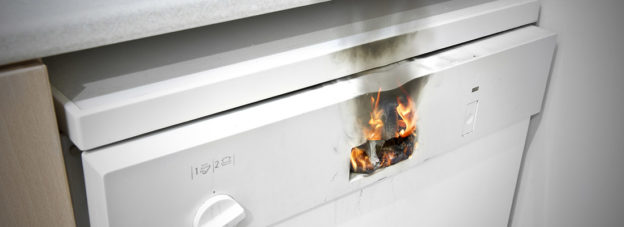In Am. Nat’l Prop. & Cas. Co. v. Broan-Nutone, No. 5:18-CV-5250, 2020 U.S. Dist. LEXIS 203267 (W.D. Ark.), a subrogating carrier filed a product liability lawsuit alleging that a defective bathroom fan caught fire and caused property damage. Prior to trial, the defendants/manufacturers filed motions to: (i) prevent the plaintiff’s experts from testifying for allegedly spoliating evidence; and (ii) prevent the admission of the fire marshal’s report as hearsay and/or as prejudicial, confusing and/or misleading. The court denied the defendants motions, thereby allowing all of the evidence to be presented by the subrogating carrier at trial.
Motion to Exclude the Plaintiff’s Expert Testimony
The defendants argued that the plaintiff’s experts should not be permitted to testify because they allegedly spoliated the fire scene during the initial site exam, which occurred before the defendants were involved in the investigation. During the initial site exam, the plaintiff’s experts sifted debris and collected the bathroom fan as evidence, which the defendants argued amounted to spoliation of evidence. The court disagreed, explaining that the purpose of the initial site exam was to determine the origin and cause of the fire, which required examination of the fire scene and collection of evidence. The fan had to be recovered and examined to confirm the cause of the fire and to identify the manufacturer. Accordingly, the court explained that, when attempting to identify interested parties (i.e., the defendants), some alteration of a fire scene is unavoidable.
In order for a court to impose sanctions for spoliation, the adverse party must be prejudiced. In this case, although the evidence was altered before the defendants could examine it, the court determined that the defendants did not suffer prejudice that warranted sanctions. Although the court noted that the initial site exam could have been documented better, the court explained that photos from the initial site exam enabled the defense experts to develop adverse opinions regarding the origin and cause of the fire. For example, the defense experts were able to identify other points of origin (away from the fan) and to conclude the switch for the fan was in the “off” position at the time of the fire. Accordingly, the court denied the defense motion to exclude the plaintiff’s expert testimony.
This decision is a reminder that experts must be minimally invasive during the initial site exam and only disturb evidence when it is necessary to identify interested parties. Thus, it is imperative for subrogation professionals to select competent experts as early as possible in the forensic investigation.
Motion to Exclude the Fire Marshal’s Report
The defendants also moved to exclude the fire marshal’s report as inadmissible hearsay and/or as prejudicial, confusing and/or misleading, by alleging it was inconsistent with his deposition testimony. The fire marshal’s report concluded: “The fire originated at an exhaust fan assembly in the ceiling of the bathroom . . . It is recommended a professional examination of the exhaust fan assembly.” At his deposition, the fire marshal appeared to contradict his report by testifying that he did not know if the fire originated in the fan assembly, but rather stated that further examination of the fan was necessary to confirm the origin of the fire. The fire marshal’s report was based upon his examination of the fire scene and did not include witness statements or other potential hearsay.
Pursuant to Federal Rule of Evidence 802, hearsay is not admissible, unless an exception applies. Rule 803(8) contains an exception to the hearsay rule (often referred to as “the public records exception”) and provides that a record or statement of a public office is admissible if “it sets out . . . a matter observed while under a legal duty to report . . . [as long as] the opponent does not show that the source of information or other circumstances indicate a lack of trustworthiness.” The court determined that the fire marshal’s report was a public record under Rule 803(8) because it was prepared by the fire marshal in his capacity as an investigator for the county. The defendants attempted to challenge the trustworthiness of the report’s conclusion (i.e., that the fire originated in the fan assembly) because the fire marshal admitted at his deposition that the assembly needed further examination. The court disagreed and explained that any inconsistencies between the fire marshal’s report and his deposition testimony goes to the weight and credibility of his opinion, not its admissibility
The defendants also attempted to exclude the fire marshal’s report under Federal Rule of Evidence 403, which provides that a court “may exclude relevant evidence if its probative value is substantially outweighed by a danger of . . . unfair prejudice, confusing the issues, [or] misleading the jury . . .” The court was unconvinced and explained that the defendants have an opportunity to impeach the fire marshal on cross examination if they believe his testimony is inconsistent with his report
This motion highlights the need for subrogation professionals to objectively and properly evaluate a fire marshal’s opinion. Even if the fire marshal’s opinion in his report appears favorable, the fire marshal’s testimony may weaken the strength of his opinion. Thus, it is often beneficial for the subrogation professional to interview the fire marshal before litigation to evaluate the strength of his opinion.

